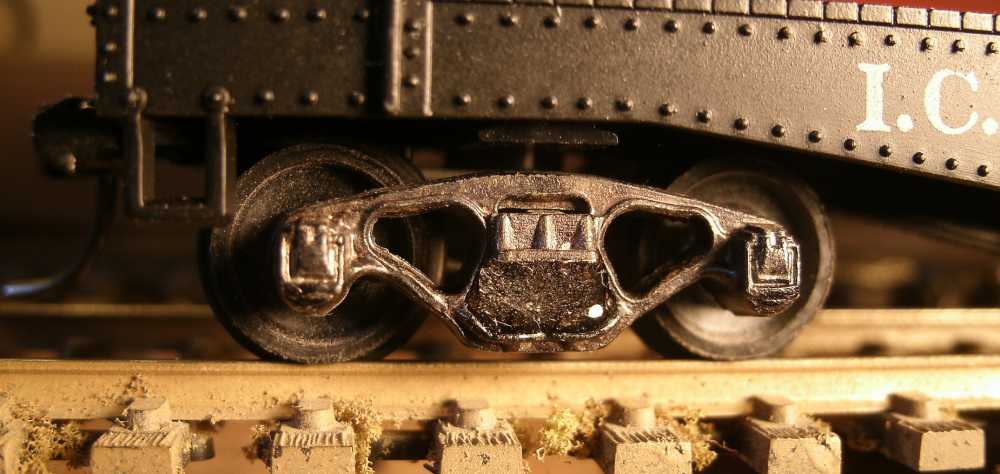
| The box says 'passenger series', maybe because of the pretty picture on the cover? |

 The instruction sheet has a NOTE that I had once heard about 5 years ago,
The instruction sheet has a NOTE that I had once heard about 5 years ago,
but had never seen for all the models I ever bought before.
I don't know if that was because of any steel shortages back in the 1950's.
I assembled my flat car without any steel weight.
I have some 4% grades on my railroad,
and I don't want to waste engine power pulling dead weight uphill.
If I have to, I have some moldable metal weights taken out of some other people's overloaded cars
that I can fit in low between the crossbeams of the underframe.
 The parts of the trucks were not assembled, just loose in the bag.
The parts of the trucks were not assembled, just loose in the bag.
I am not a fan of putting those steel springs into the truck frame.
They look good, but 30 years ago I squinted real close at a caboose that always derailed,
and saw that the springs were allowing the truck to twist as just one wheel wanted to climb at a switch.
That's too independent of a suspension where 3 wheels stay on the rails and one can still ride up.
Lots of extra weight might help, but I find that just enhances derailments after the wheel hits the ground.
I epoxy my old sprung trucks so they have a solid frame, like the modern solid all-plastic trucks.
Usually I just put a drop of glue behind the springs, where it doesn't show.
But since I already lost one spring and got frustrated,
I just set the assembled truck upside down on the table and filled the whole gap with plenty of epoxy.
It won't be noticeable unless I would actually paint or weather this truck.

.
| I loaded the flat car with plastic straws. |

.
|
The box has pictures of other kits available in the 1950s. And I didn't realize until later that the 3-dome tank car was at the same sale. And later yet, at an antique store, I got a (very rusty) CNW heavy duty flat that look like it suffered a lot of miles. And the Blatz car was in my first train set (Athearn actually sold train sets) in the 1960's |

to My Main Index Page on the TrainWeb site.
This page was wrote in April, 2024.